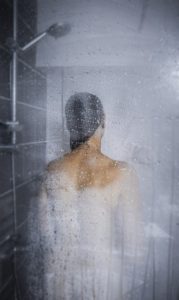Excerpts from a study initially published in the International Journal Of Dream Research – modified by addition of pictures – Buzzi, G. (2011). False awakenings in light of the dream protoconsciousness theory: a study in lucid dreamers, 4(2), 110–116, https://doi.org/10.11588/ijodr.2011.2.9085
“False Awakenings In Light Of The Dream Protoconsciousness Theory: A Study In Lucid Dreamers”
“False awakenings (FAs) are sleep-related experiences in which the subjects erroneously believe that they have woken up, only to discover subsequently that the apparent awakening was part of a dream…
 …Different from ordinary dreams, FAs have been reported to typically provide a realistic replica of normal perception. The subjects may experience a realistic representation of normal daily activities before really waking up in bed…with radical spatial-temporal discontinuities being typically absent or greatly attenuated…
…Different from ordinary dreams, FAs have been reported to typically provide a realistic replica of normal perception. The subjects may experience a realistic representation of normal daily activities before really waking up in bed…with radical spatial-temporal discontinuities being typically absent or greatly attenuated…
..The same scenario may unfold repeatedly. One of the respondents in the present survey wrote: “Perhaps the worst FA experience for me, or the most irksome anyway, is the “start your day FA”. I wake up, shower, shave, dress, make breakfast, have a few cups of coffee, and am heading out the door to go to work, when suddenly… I wake up. There have been times that this process has repeated itself a dozen times, when I finally actually do wake up I am exhausted with the effort of getting ready for work so many times, and I remain suspicious and dubious as to whether I am really awake for quite some time”…
…FAs differ substantially from ordinary dreams. Cheyne (2004) states: “False awakening contradicts, as does lucid dreaming, the notion of a one-way understanding between dreams and waking consciousness. The false awakening experient is, in a sense, acutely aware of the waking world, actively believing that s/he is in it and, explicitly, out of the dream world. Thus, although the consciousness of false awakening is non-lucid with regard its own status, it is, unlike the conventional dream, implicitly aware of the existence of two worlds. The confusion is simply about which one the experient is in”…
dreaming, the notion of a one-way understanding between dreams and waking consciousness. The false awakening experient is, in a sense, acutely aware of the waking world, actively believing that s/he is in it and, explicitly, out of the dream world. Thus, although the consciousness of false awakening is non-lucid with regard its own status, it is, unlike the conventional dream, implicitly aware of the existence of two worlds. The confusion is simply about which one the experient is in”…
…FAs seem to escape the phenomenon of “dream amnesia” which, in ordinary dreams, may explain such features as sudden and complete scene shifts and the frequent occurrence of impossible events and plots (Hobson et al., 2000). On one hand, FAs –different from ordinary dreams – are usually well remembered in waking. Many respondents report that when they wake up after one or more FAs, they typically question if they are really awake, due to the vivid and persisting memory of the preceding experience…
…On the other hand, elements related to explicit memories seem to be much more accessible during FAs then during ordinary dreams…
…A hyper-aroused REM sleep state is likely to underlie FAs, as suggested by their frequent association with lucid dreams and with sleep paralysis (see Introduction)…. Accordingly, the peculiar polysomnographic pattern observed in a unique case of laboratory-documented FA (Takeuchi et al., 1994) was indicative of an anomalous, hyper-aroused REM sleep state…
…The fact that FAs tend to express highly realistic and detailed experiential memories (visuo-spatial memories of familiar environments, autobiographic memories of general – more than episodic- events such as nocturnal awakenings, start-of-the-day routine, etc) suggests that in this state the ordinary REM sleep machinery aimed at dismantling explicit memories is not properly at work. This could be the trivial effect of a disturbed REM sleep. Alternatively, FAs could represent a vestigial REM sleep in which such machinery hasn’t developed yet….
familiar environments, autobiographic memories of general – more than episodic- events such as nocturnal awakenings, start-of-the-day routine, etc) suggests that in this state the ordinary REM sleep machinery aimed at dismantling explicit memories is not properly at work. This could be the trivial effect of a disturbed REM sleep. Alternatively, FAs could represent a vestigial REM sleep in which such machinery hasn’t developed yet….
…Accordance with the proposed hypothesis, a high prevalence of FAs could be expected in children, whose “REM sleep machinery” might be less developed…
…Undoubtedly, FAs represent a fascinating, yet largely unexplored state of consciousness which deserves more attention by the dream research community…”
